Things that changing the Internet

The internet is undergoing significant changes. These developments are more gradual than the emergence of social networks and smartphones in the late 2000s, but as aging technologies fade away, new problems emerge. With new technologies evolving that can help deliver high-speed internet to more people than ever before, there are also new challenges. Continue reading to learn more about the reforms that will take place in 2021.
5G home Internet has the potential to be a serious competitor.
For a long time, 5G mobile phone technology has become a buzzword. 5G home broadband is one feature that has gained less coverage. Many conventional wired connections, such as cable, can't keep up with 5G. As a result, 5G is a perfect choice for cell phones as well as a viable option for home internet.
5G networks are widely only available in major cities; however, even in heavily populated areas, many households have only had one or two practical high-speed internet options. Having Verizon, AT&T, and T-Mobile all deliver gigabit speeds at the same time will be a game-changer.
5G is also expected to help close the digital gap by introducing faster internet to rural America. In reality, the FCC has established a rural 5G fund with this aim in mind. 1 Unfortunately, due to the extensive infrastructure required to support a 5G network, rural expansion would be slow.
Also, Read: What is 5G and Why it Matters?
Rural internet access could be transformed by 4G home internet.
The development of 4G and 4G LTE home internet is a far more promising option for rural internet. 4G networks, like 5G, are focused on cellular technology, but they still cover a significant portion of the US population. Verizon, for example, is investing in existing networks to improve home internet connectivity.
4G home broadband, while not as fast as 5G, will offer faster speeds than many other rural alternatives. Plus, unlike other internet types such as cable or satellite, 4G provides stable internet at a much lower cost and with less equipment. This could result in a significant increase in work opportunities in rural areas, as well as a significant improvement in online education.
A satellite in low-Earth orbit is getting closer to being a reality.
The invention of low-Earth-Orbit (LEO) satellite constellations is another technology that will greatly support rural areas. LEO satellites orbit at a lower altitude than conventional communications satellites, which must be positioned tens of thousands of miles above the Earth's surface. This means that their signals fly much quicker back and forth, resulting in lower latency and potentially faster speeds than conventional satellite internet.
While SpaceX's Starlink satellite internet service is currently the market leader in LEO satellite internet, it is far from the only company working on this technology. Amazon, OneWeb, and Boeing are among the companies designing their own LEO satellite systems. LEO providers, if effective, could provide cheap, dependable internet to nearly every corner of the globe.
Wi-Fi 6 is taking over
Wi-Fi 6 is the latest home networking standard. Since it's been around for a while, there's less of the buzz that there was a year ago. At the same time, Wi-Fi 6 devices are becoming more affordable, and the standard is becoming more widely adopted. By next year, annual shipments of Wi-Fi 6 components are expected to reach 1 billion. 2 This ensures that ordinary customers won't have to spend hundreds of dollars on a next-generation router to upgrade their home networks.
In addition, many home networks may benefit from an update.
Smart TVs, smartphones, and tablets have become popular in many homes, but they aren't the fastest-growing categories of internet-connected devices. In the coming years, the Internet of Things is expected to account for more than half of all internet-connected devices. Anything from light bulbs to thermostats to coffee makers falls into this category.
Wi-Fi 6 is the answer to dealing with this onslaught of new gadgets. It's not only faster than older Wi-Fi systems, but it's also designed to handle congested wireless networks. It can also extend the battery life of your network's computers. If you're looking to update your router this year, look for one that supports Wi-Fi 6.
More people are getting access to high-speed internet as a result of fiber expansion.
Fiber is the internet's backbone, and while there are many modern and exciting ways to get the internet into people's homes, fiber-to-the-home is still the most reliable way to communicate.
With the launch of Google Fiber in 2010, fiber internet received a significant boost. Unfortunately, the search engine behemoth's growth ambitions came to a halt a few years later when it was stymied by rival litigation. Despite the fact that it initially seemed to be a failed experiment, Google Fiber sparked a flood of fiber-related interest, forcing other providers to invest in expanding their networks.
DSL is being phased out by ISPs.
Older technologies are being phased out as new internet technologies shift the way we communicate. Most DSL providers want to migrate to newer, quicker, and more stable networks because old DSL networks can't keep up with rising speed demands. DSL will soon be relegated to the same status as dial-up internet.
This is welcome news for many people, as it means more high-speed opportunities in more places. However, those who depend on DSL will face new challenges as a result of the move. Many Internet service providers have caused their copper DSL networks to deteriorate, while others, such as AT&T, have stopped providing DSL to new customers entirely.
Rural and low-income communities are being left behind as providers broaden their broadband networks, according to organizations like the Communication Workers of America and the National Digital Inclusion Alliance. 11 This means that as DSL becomes obsolete, consumers will have even fewer options. Maintaining American connectivity was a big challenge during the COVID-19 pandemic's peak, and it could be even more challenging in 2021.
Consumers need more from their connections
The global COVID-19 pandemic altered our internet use, particularly in terms of upload speed and latency. Prior to the pandemic, most internet users had only one concern: download speed. YouTubers, Twitch streamers, and other content creators, of course, care about upload speed. People who played online games, on the other hand, were well aware of the importance of low latency. However, for the vast majority of the population, these were minor issues.
We've had to adjust how we use the internet since the COVID-19 pandemic broke out. Distance learning, telehealth, and remote work are now commonplace, making video chat a must-have. High-speed cable connections that once provided a smooth online experience are now struggling to keep up with the upload speed needed to handle all of your video calls.
Many citizens would continue to operate from home after the pandemic is over. As a result, access to infrastructures such as fiber and 5G will become even more important in assisting communities in developing their local economies.
This continued dependence on high-speed internet poses major obstacles for municipalities attempting to promote the advancement of digital technology, but it also allows underserved areas to profit from the economic benefits of high-speed internet.
Related Posts
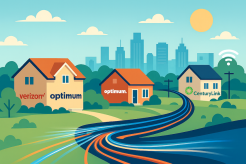
Thu, Dec 4, 2025 3:30 AM
Internet BundlesBest Fiber Internet Providers in the US : Fast, Reliable, and Worth It
Discover the top fiber internet providers in the US, their speeds, pricing, and customer satisfaction ratings. Find the best plan for fast, reliable, and uninterrupted internet.
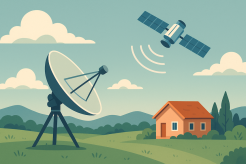
Thu, Dec 4, 2025 3:17 AM
Internet Bundles cheap internet dealsHughesnet Satellite Internet Review: Plans, Pricing, Speed
Get an in-depth Hughesnet Satellite Internet review covering plans, pricing, speed, and performance. Learn whether Hughesnet is the right choice for rural or remote households
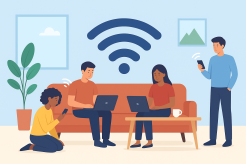
Wed, Dec 3, 2025 2:36 AM
Internet BundlesBest Cheap Internet Plans Under $50 a Month You Can Actually Use
Discover the best cheap internet plans under $50 per month with reliable speeds, unlimited data, and flexible options. Compare top providers and find the right plan for your home.
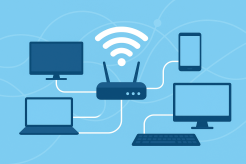
Wed, Dec 3, 2025 2:05 AM
cable dealWhat Can You Really Do With a 100 Mbps Internet Connection?
Discover what a 100 Mbps internet connection can handle, from streaming and gaming to remote work. Learn how to choose the right plan for your household.
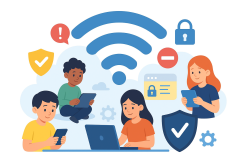
Tue, Dec 2, 2025 3:31 AM
SafetyHow to Keep Your Kids Safe Online Today
A clear, parent-friendly guide on protecting kids online. Learn essential digital safety habits, social media precautions, password protection, and practical tips for raising safe and confident young internet users.